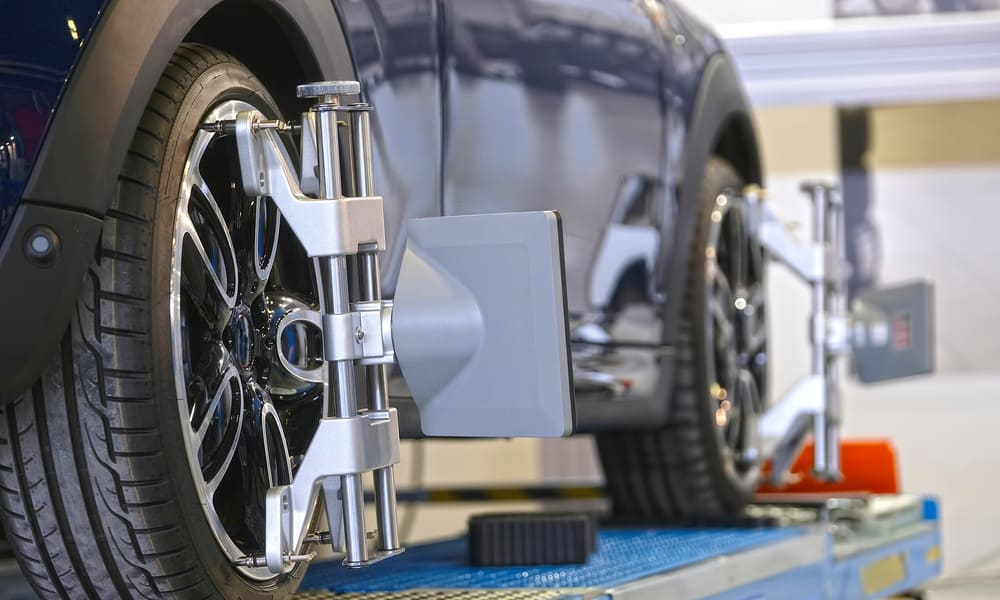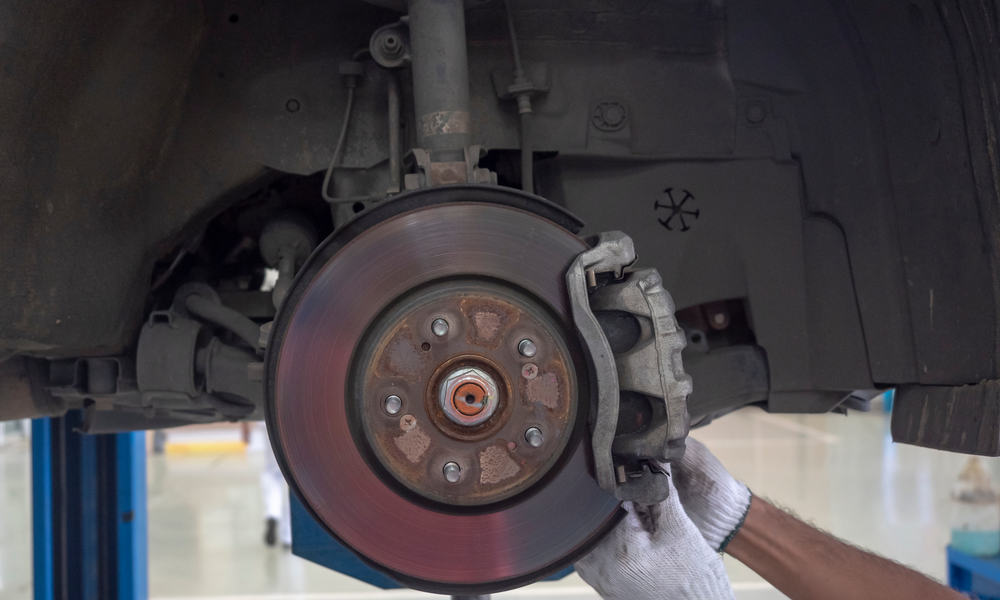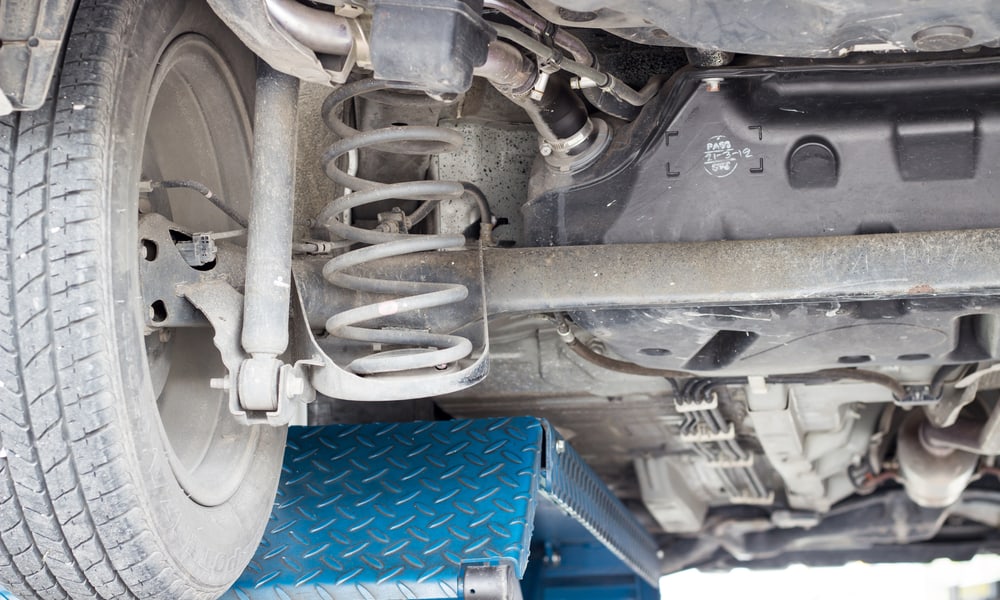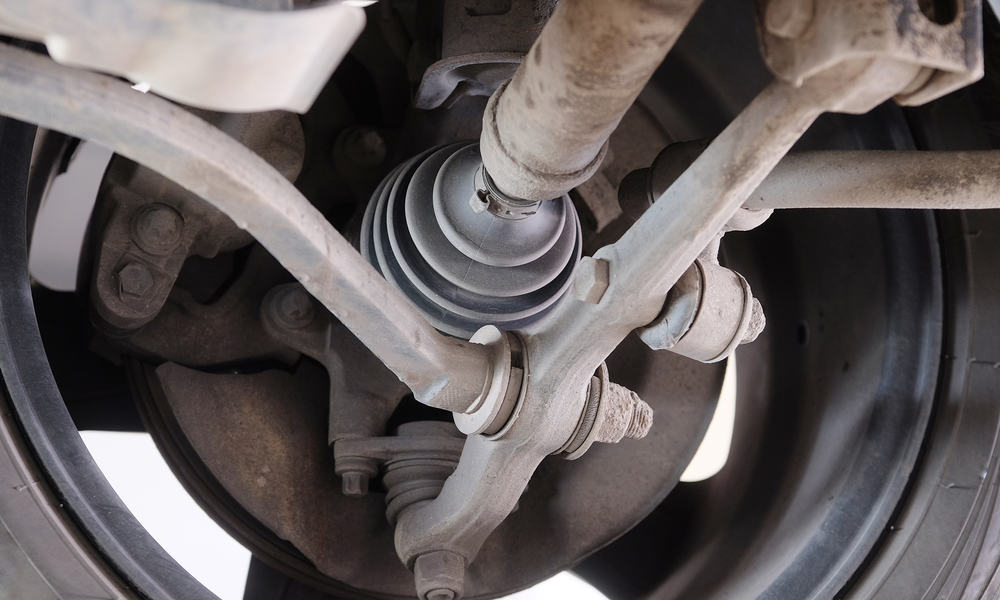What would cause a tire to wear on the outside? Most drivers ask this question when the damage has been done. They don’t notice any signs of damage until the performance of the tire has already gone south. Such negligence is not only dangerous but it can be costly too.
Start with the dangerous part. Too little tire tread can create unsafe driving conditions as the tires won’t be able to grip the road. The inability of the tire to maintain optimum traction, especially on snowy and wet roads, will make it prone to slippage.
Then there’s the costly scenario. Tires that wear down quickly don’t only put your safety in jeopardy. They also end up making a big hole in your pocket. That is because tire wear, once it has reached an extreme level, is irreparable and requires you to replace the tire altogether.
Read on to prevent both these scenarios:
Causes of tire wear on the outside edge
Here are the reasons that cause a tire to wear on the outside:
1. Wheel Misalignment

Was your vehicle involved in a major accident of late? Do you remember one of its tires hitting a large pothole while you were driving? Did one of its tires mistakenly climbed over the road’s hard shoulder? These are some of the reasons that cause the wheel to go out of alignment.
In the aftermath of all these scenarios, the wheel tilts on the outside and starts putting more pressure on the road-facing shoulder of the tire. This issue appears benign at first. But over time it causes the rubber on the tire’s outer edge to scrub faster than the one on its inner edge.
If you ignore this problem for a long time, the rubber scrubbing will lead to the tire developing uneven wear on its outer edge. This will happen because of the tire’s outer edge scrapping itself off on the asphalt and wearing down its road-facing edge.
Solution:
Check the alignment of your tires every 6,000 to 7,000 miles. Decrease the time between successive alignment checkups once the suspension and wheels get older.
2. Bent Spindles or Struts

Struts or spindles form an essential structural component of most vehicles’ suspension. They join the dampening impact of the shock absorber with the upper ball joint and hold the wheel and tire assembly in place. Their optimum performance is also necessary to maintain ride comfort.
Most of the time, the top of the strut is rotated to get optimal camber and correct wheel alignment. When that specific part is bent, the entire setting misaligns. This causes the wheel to misalign and the front tires to start wearing on its outside edge.
The magnitude of the tire wear will be dependent on how much (or how little) the spindle has bent. That is to say that if you notice the bend in the spindle in the early stages, the damage to both it as well as the tire wear may be reversible (and less costly to repair).
Solution:
If the spindle has bent beyond repair, you have no option but to replace it. This might cost you between $480 and $600, including labor and the part cost. However, if the damage to the spindle isn’t too severe, you can take it to a tire shop and have it straightened for a fraction of the price mentioned before.
3. Sagging Springs

Most of you will already be aware of the importance of your vehicle’s springs. They support the car’s entire weight and absorb excess energy that emanates from road shocks. Their anti-sway bar is responsible for shifting the movement of the wheels and, in turn, stabilizing the car.
Application of constant load on the springs weakens their flexibility. It results in either the leaf spring losing arch or the coil spring losing height. Front tires that wear on the outside do so because of the latter scenario – their coil springs have lost height due to aging.
Once the coil springs start losing their height, your vehicle follows suit. This causes a misalignment in the entire suspension of the vehicle. Such a scenario will force the tire to handle more weight and might cause its outside edge to wear.
Solution:
Replace the springs that may have sagged. You can either replace them in your garage (if you have experience of doing mechanical work), or you can take your vehicle to a workshop. Either way you must be prepared to fork out up to $450 on replacement parts.
4. Worn Ball Joints

Ball joints are a crucial component of your car’s front suspension. Their work involves maintaining the tire’s optimum contact with the road throughout the motion of the suspension. They also control arms to provide a vibration-free ride and give you full control over your vehicle.
Similar to other parts in your vehicle, ball joints are also prone to wear and tear. As they start to show signs of damage, your car’s wheels start pointing slightly outward. Mechanics refer to this condition as the ‘toe’ of the wheel going out of alignment.
Tire wear caused by worn-out ball joints is hard to notice but it is no less dangerous than one caused by wheel misalignment. Both end up placing more pressure on the outer edge of the tire and may lead to the tire wearing on the outside.
Solution:
Replace the worn-out ball joints and have the front wheels re-aligned. If the problem still persists, you may also have to change the control arm. All these replacements might set you back $1500 to $2000.
Conclusion
Multiple reasons might cause your tire to wear on the outside. Its wheel might have misaligned, the strut or spindle might have broken, the ball joints in the suspension might have worn out, or the springs underneath your vehicle may have sagged. The good news is that all these issues can be treated.
The bad news, however, is that the cost of treatment depends on the extent of the damage. Identifying and rectifying the problem in early stages is, therefore, crucial if you don’t want to fork out hundreds of dollars on replacement parts’ and labor costs.
The post 4 Causes of tire Wear on the Outside Edge appeared first on Smart Motorist.
source https://www.smartmotorist.com/what-would-cause-a-tire-to-wear-on-the-outside
No comments:
Post a Comment